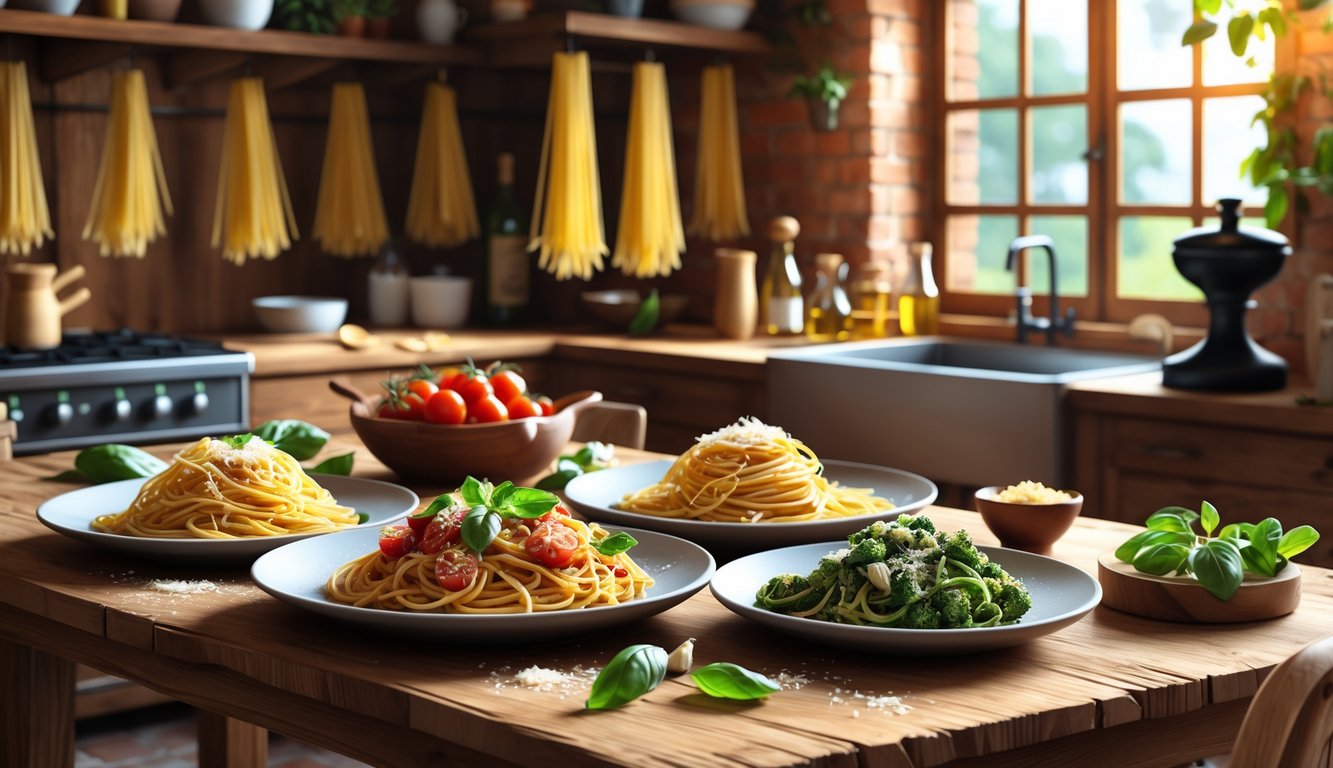
Dolci and Unexpected Menu Offerings
So many “authentic” Italian restaurants abroad do weird stuff with desserts and coffee. Milky drinks, mystery fried things, and desserts that make locals cringe. I’ve watched entire tables get confused and order the wrong thing because the menu’s just a mess.
Cappuccino: When to Have It
I’m 28 and still get judgy when someone hands me a cappuccino after lunch. My nonna would mutter something sharp in Italian—nobody from Rome or Naples drinks milky coffee after noon. Morning? Sure, with a pastry. But after lunch? No way. Even Florence baristas will side-eye you if you order one at 2 p.m.
Yet, in London or New York, every “Italian” café offers cappuccino all day. Nobody told them, I guess. Gennaro Contaldo (he’s real, look him up) jokes about this—“That’s for tourists,” he says, and he’s not really kidding. Unless you want to freak out your Italian friends or get a rant about digestion, just order an actual Italian coffee after lunch.
Nobody will say it out loud, but Italians abroad just quietly skip cappuccino after noon and drink water. It’s a silent rule.
Dolci Traditions in Italy
Once, in Boston, a waitress tried to tell me tiramisu was a breakfast food. No. Just, no. Italians don’t eat dessert for breakfast unless it’s Christmas. Dolci—desserts—come after a meal, and not in the “brownie sundae” style you see in the States. If the menu lists more than three or four desserts, something’s weird.
Usually, it’s panna cotta, semifreddo, maybe torta della nonna. If you see “lava cake” or peanut butter gelato, you’re not in Italy; you’re in a chain restaurant. Even chefs say the more Americanized the dessert menu, the less likely any Italian’s ordering.
If you want to look like you know what you’re doing, get an amaro and a simple tart, or just ask what the house recommends. Locals are definitely judging your order.
Mozzarella Sticks and Surprising Imports
Mozzarella sticks on an Italian menu? Hilarious. No one in Liguria’s ever dunked a fried cheese stick in bland marinara. Mozzarella in Italy is soft, fresh, maybe in a caprese, on pizza, or melted in baked pasta. The fried stick thing? Totally American.
I once asked a chef near Naples about mozzarella sticks. He nearly spit out his espresso—said those and “fettuccine Alfredo” are for novelty acts, not real menus. These dishes popped up abroad, mostly to pad out menus for people who want “Italian” but not the real thing. Still, pub chains in the U.S. sell thousands. Someone’s eating them—not anyone in Italy.
So, if you see “cheesy fried appetizers,” it’s not a secret local thing. Want real Italian starters? Try arancini or just some prosciutto and melon. The rest is just marketing.
Frequently Asked Questions
I’m not obsessed with “authenticity” for the sake of it, but if I see another tourist raving about “spaghetti with meatballs” in Florence, I might lose it. It’s not snobbery. It’s just—these dishes get so twisted abroad, they’re unrecognizable.
What are some classic Italian dishes that locals would never order outside of Italy?
Honestly? I’d never touch fettuccine Alfredo outside Italy unless the place is basically advertising for Americans. Weird, but true: that creamy, garlic-heavy plate isn’t even a thing in Rome. Real Roman pasta—cacio e pepe, carbonara—doesn’t come with cream. Some combos are pure fantasy if you’re expecting them in Naples or Florence. Order “spaghetti with meatballs” as a single dish and watch the server’s face (proof here).
And why does everyone outside Italy serve “Bolognese” with spaghetti? I’ll never get it.
Which Italian pastas do chefs consider inauthentic when served abroad?
Okay, so here’s the thing: chicken on pasta? Why? I swear, every time I see chicken Alfredo or chicken ravioli on a menu outside Italy, I just want to walk out. Italians don’t really do chicken in ravioli—if you find it, it’s probably ricotta and spinach, or maybe veal, but chicken? Nope, never. Not even once in all the years I’ve eaten my way through Italy. And yet, somehow, it’s everywhere else. (Proof right here, if you think I’m making it up).
And don’t get me started on pizza that’s basically a mountain of toppings. Once, this chef in Milan just stared at my friend’s pizza and muttered something about “tasting the dough, not the supermarket.” He wasn’t wrong. Why is “more” always the answer? Overkill ruins everything.
Are there specific Italian recipes typically misunderstood or altered outside of Italy?
Oh, constantly. I mean, “Alfredo” sauce—what even is that? It’s not Italian, not really. It’s like somebody in America just went wild with cream and cheese and called it a day (don’t believe me? Here’s an article). And “spaghetti alla Bolognese”—seriously, go to Bologna and try to order it. They’ll look at you like you asked for ketchup on your gelato. It’s tagliatelle al ragù there, and it’s not even close to the tomato soup version I keep seeing everywhere else.
How did we end up here? Is there a secret contest for who can dump the most sauce on noodles and still call it Italian? I kind of wish there was a way to report these crimes in real time. Pasta 911, anyone?
Can you name a few Italian pasta dishes that are often misrepresented in foreign restaurants?
Alright, penne alla vodka: why does it always come out swimming in cream? Alfredo? It’s basically this weird, cheesy blob nobody in Italy would touch. And don’t get me started on margherita pizzas that show up with a basil jungle suffocating under a lake of oil and cheese. Chefs in Rome just shake their heads and sigh whenever tourists order pizza with a grocery store on top (don’t take my word for it, check this out).
And then there’s “carbonara” that skips the eggs but throws in mushrooms. At that point, what are we even doing? Just call it “pasta surprise” and move on.
What should I avoid ordering at an Italian restaurant if I want an authentic experience?
If you’re after the real deal, honestly, just skip anything labeled “Alfredo,” pasta with “marinara” sauce, or “spaghetti Bolognese.” I see spaghetti and meatballs on the same plate and I’m gone. Italians don’t do that; it’s just not a thing (here’s the proof, if you’re curious).
Watch out for chicken sneaking into your pasta, carbonara with cream (why?), or dishes that sound like they got invented in a brainstorming session gone wrong. If your gut says it’s not really Italian, trust it. It probably isn’t.
Which regional Italian specialties are rarely found authentic outside of Italy?
Okay, so here’s the thing—I’ve spent way too much time hunting for real-deal Roman carbonara, cacio e pepe, or that dreamy Sicilian pasta con le sarde in places that aren’t, well, Italy. It’s honestly always off. Like, what’s with the weird cheese? Or that bizarre fish? And don’t even get me started on the cream. Italians would riot if they saw what usually passes for these dishes. I mean, is it that hard to just not add cream? Apparently, yes.
Neapolitan pizza? Yeah, technically you need this slow, almost obsessive dough fermentation. But outside Naples? People just rush it, skip steps, whatever. You end up with pizza that’s basically just bread with stuff on it. Not the same. Not even close.
Someone I know from Sudtirol—total food snob, by the way—once said prosciutto’s the only thing that survives the trip because, and I quote, “you don’t cook it.” Which, honestly, fair point. Everything else? If you swap out the cheese or use sad, bland tomatoes, you’re just making knockoffs. Why even bother?



